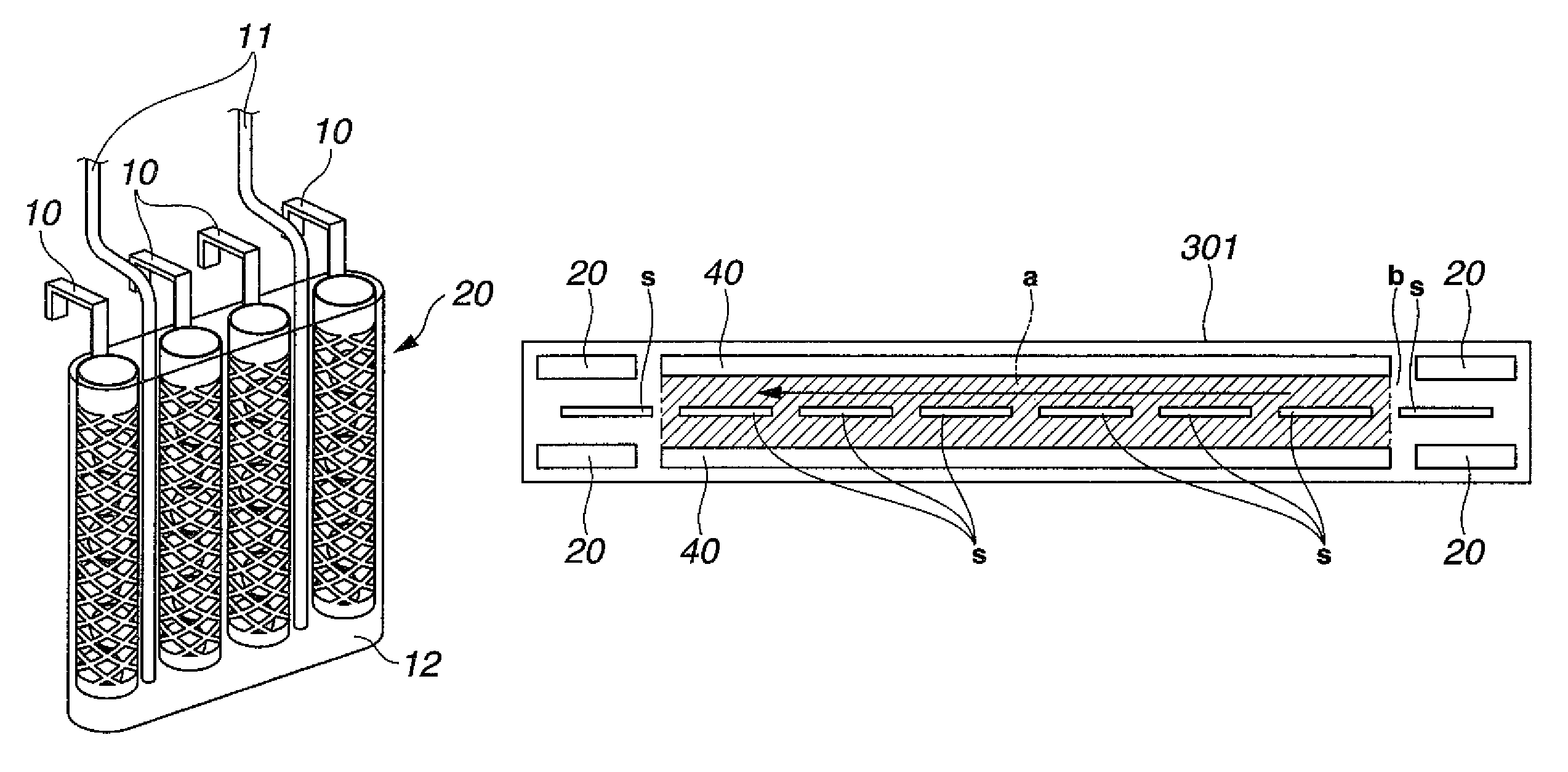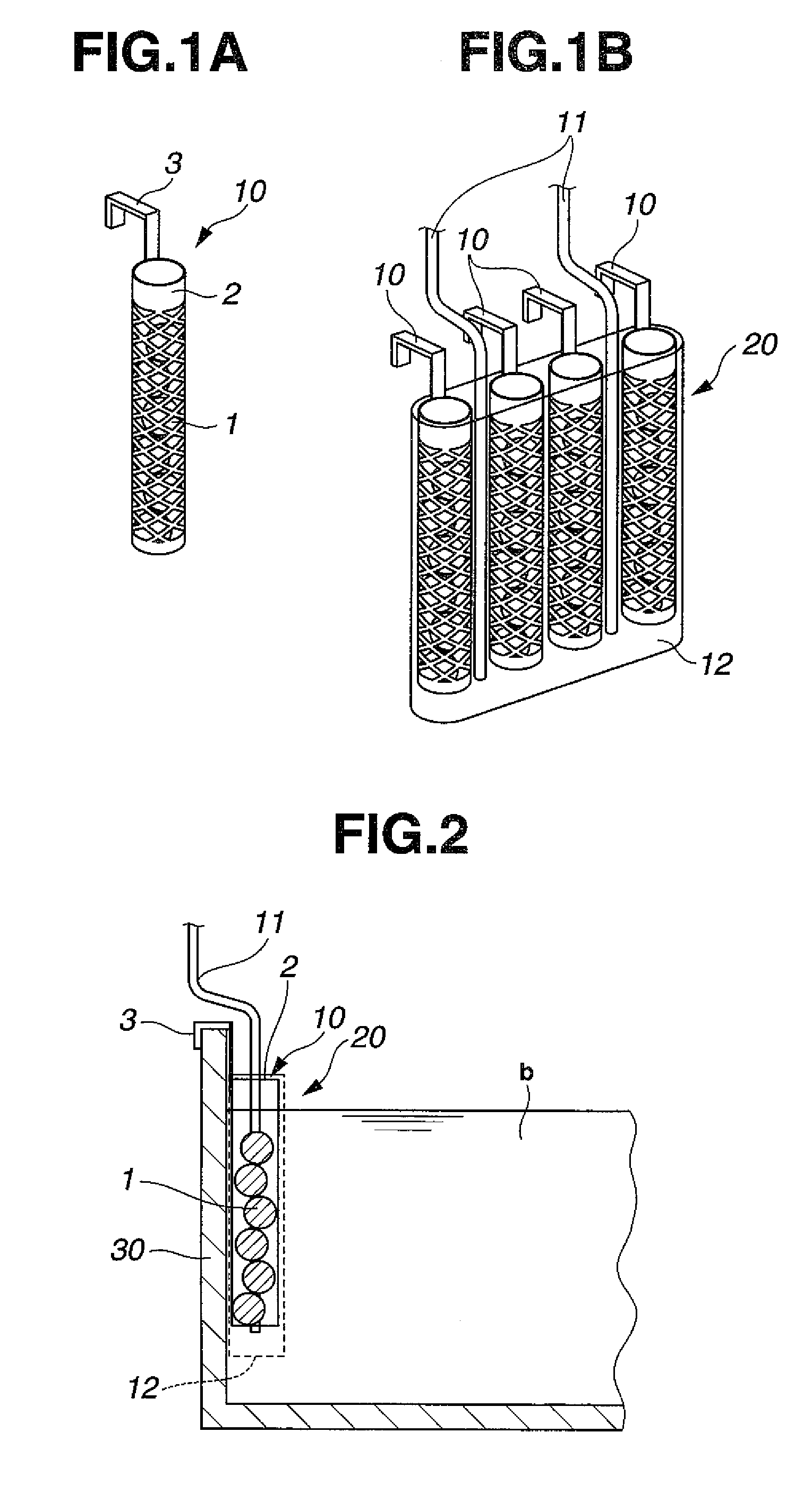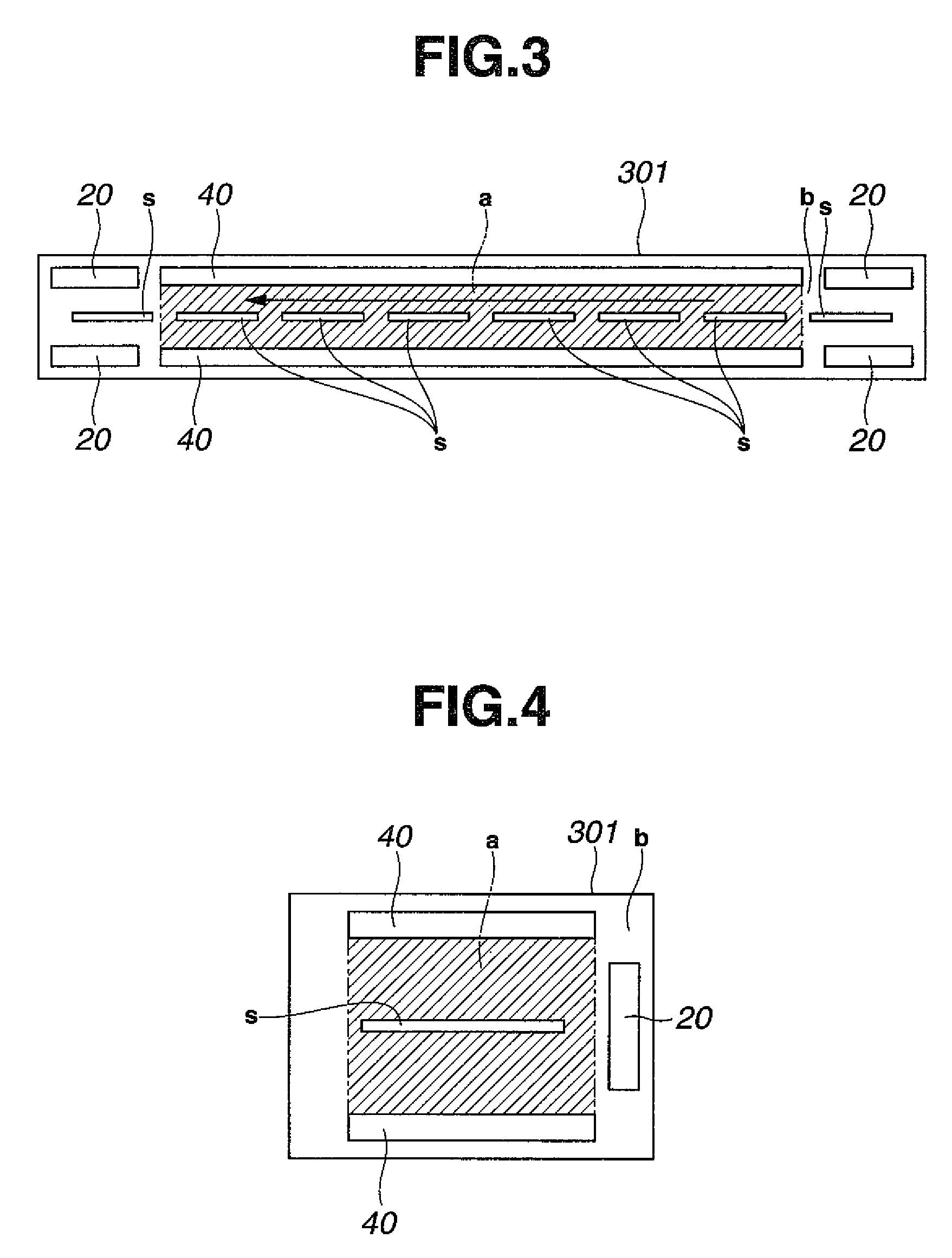Electrolytic copper plating process
a technology of electrolytic copper plating and copper plating film, which is applied in the direction of electrolytic processes, electrolysis components, printed circuit manufacturing, etc., can solve the problems of not being suited to practical use, taking an unduly long time for the full oxidative decomposition of decomposed/modified organic products, and failing to obtain copper plating films or copper plating fills as desired
- Summary
- Abstract
- Description
- Claims
- Application Information
AI Technical Summary
Benefits of technology
Problems solved by technology
Method used
Image
Examples
example 1
[0060]As workpieces to be plated, printed circuit boards having blind vias of 80 μm diameter and 35 μm depth were provided. After conventionally-known pretreatment, catalyst treatment and chemical copper plating were applied to the printed circuit boards, electrolytic copper plating was continuously applied under the below-described conditions for running plating in the below-described copper sulfate plating bath by changing the circuit boards one after one. As oxidative decomposition units, unit similar to that shown in FIG. 1B were used by arranging them at the positions depicted in FIG. 3. During the electrolytic copper plating, various components were measured by known concentration analysis methods. Copper ions were replenished by dissolving copper oxide in the separate tank 50 shown in FIG. 7 and circulating the plating bath to the plating tank 30 by a pump, and other components were replenished to the overflow tank 302 as much as needed. In the electrolytic copper plating bat...
example 2
[0066]Electrolytic copper plating was performed in a similar manner as in Example 1 except that the anode was changed to a soluble anode (phosphorus-containing copper balls held in a Ti-made basket and covered by a polypropylene-made bag). Plating fillability for blind vias was assessed as in Example 1. The results are presented in Table 1.
examples 3 to 5
[0072]Electrolytic copper plating was performed in a similar manner as in Example 1 except that the bath current density (in those examples, the plated area was not fixed at 50 dm2 but the bath current density was used as an index) and the total immersed area of metal copper and the air bubbling rate were changed as presented in Table 2. Plating fillability for blind vias was assessed as in Example 1. The results are presented in Table 2.
PUM
| Property | Measurement | Unit |
|---|---|---|
| current density | aaaaa | aaaaa |
| pH | aaaaa | aaaaa |
| current density | aaaaa | aaaaa |
Abstract
Description
Claims
Application Information
 Login to View More
Login to View More - R&D
- Intellectual Property
- Life Sciences
- Materials
- Tech Scout
- Unparalleled Data Quality
- Higher Quality Content
- 60% Fewer Hallucinations
Browse by: Latest US Patents, China's latest patents, Technical Efficacy Thesaurus, Application Domain, Technology Topic, Popular Technical Reports.
© 2025 PatSnap. All rights reserved.Legal|Privacy policy|Modern Slavery Act Transparency Statement|Sitemap|About US| Contact US: help@patsnap.com



